Green architecture – University of Wyoming Visual Arts Center
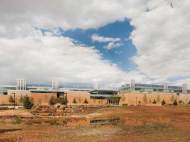 The University of Wyoming wanted a green design for its new Visual Arts Center that would incorporate the latest technology, provide a safe and healthy environment for all users promote interdisciplinary collaboration, and provide a welcoming gallery/lobby to encourage community outreach. The resulting building managed to achieve all those goals, while being sustainable and aiming for LEED Platinum certification.
The University of Wyoming wanted a green design for its new Visual Arts Center that would incorporate the latest technology, provide a safe and healthy environment for all users promote interdisciplinary collaboration, and provide a welcoming gallery/lobby to encourage community outreach. The resulting building managed to achieve all those goals, while being sustainable and aiming for LEED Platinum certification.
Designed in collaboration between Malone Belton Abel and THA Architecture, the 80,000-sq-ft building on a 10-acre site at the UW campus in Laramie houses classrooms, offices, an exhibition gallery and facilities for art history, ceramics, sculpture, painting, small metals, printmaking and digital media. The general contractor of the project was GE Johnson Construction.
The Visual Arts Center is located at the east end of campus, adjacent to the Centennial Center, an iconic building designed by Antoine Predock that houses the University Art Museum and Cultural Heritage Center. The building’s exterior incorporates the sandstone, architectural precast concrete, high-performance aluminum curtain wall, zinc panels, glazing, stone, and other materials used in the center of Campus and it presents a new look appropriate to the Visual Arts activities inside. It aligns comfortably with the architecture of the adjacent Heritage Center, while maintaining a clearly distinct identity. The interior is very well lit and it gives a modern industrial, yet creative vibe.
Despite the fact that student activities such as welding and hazardous chemical applications require stringent ventilation requirements, the building was designed in a way which allows 40% better performance than code for energy usage. Every studio classroom has an independent, variable air system with low-velocity displacement diffusers. Further savings are achieved when those spaces aren’t in use and an automation system kicks in to save energy.
The automation systems also make sure that lighting and exhaust fans aren’t being accidentally left on. Other energy-saving and user-friendly features include abundance of daylighting, light shelves and indirect lighting. An interactive touch screen in the building’s lobby is used to educate and showcase the building’s energy efficiency and other sustainable features, thus promoting sustainability among the visitors and occupants.
Heat-recovery coils on most of the building’s exhaust air systems are used to capture the heat leaving the building and use it to preheat the outdoor air at the central air-handling units. The system is designed to provide heated air at head level even though ceilings reach up to 4.9 m (16 ft) on the first floor. Slot vents on countertops extract fumes before people can breathe them, and a filter system signals an alarm when vents and filters need service.
German-made Oventrop system’s solar heat collectors cover two sections of the roof and provide 1,134 MBtu/year glycol-based, solar-thermal heating. The system is used to produce hot water for domestic hot water use as well as in-slab radiant heating. Any excess of heat generated by this system is discharged through a dry cooler. Low-flow plumbing fixtures reduce water consumption by 40 percent.
The University of Wyoming Visual Arts Center building is cooled by a centralized evaporative system, with natural ventilation for perimeter offices and common areas. The refrigerant-free system harnesses the frequent regional winds by strategically locating exterior louvers and ducting into interior common spaces.

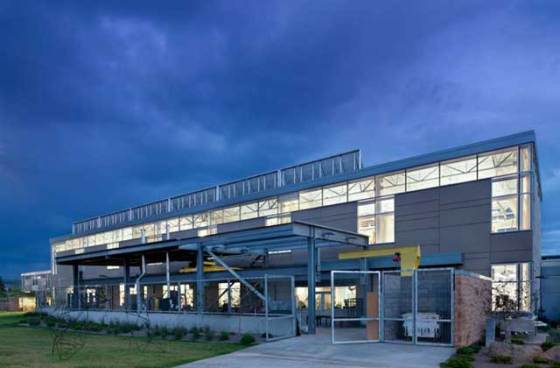
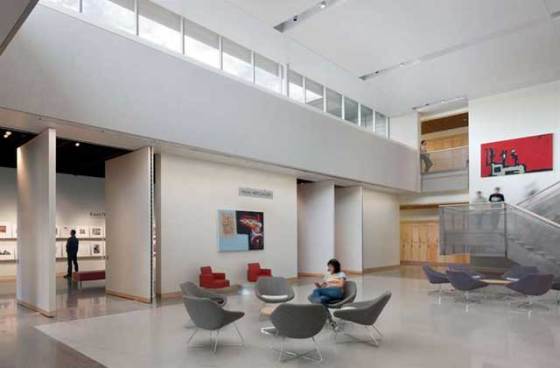
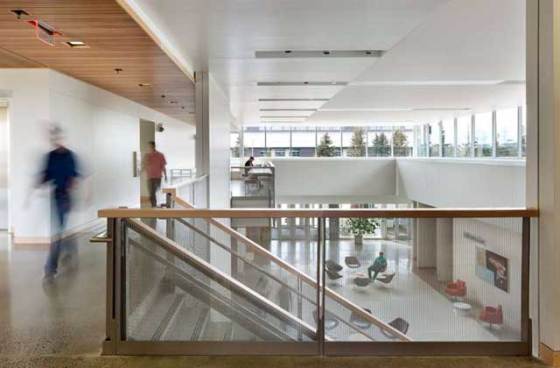
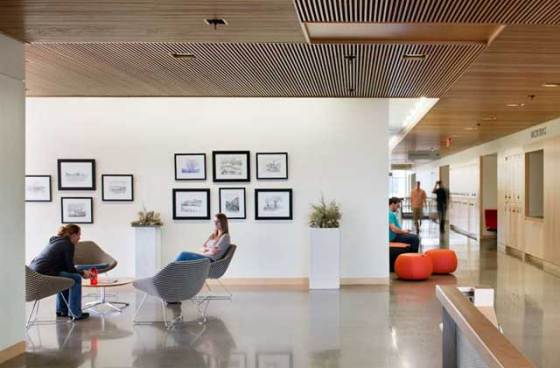
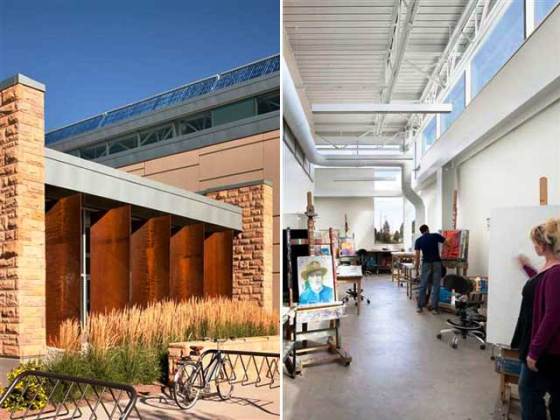








Leave your response!